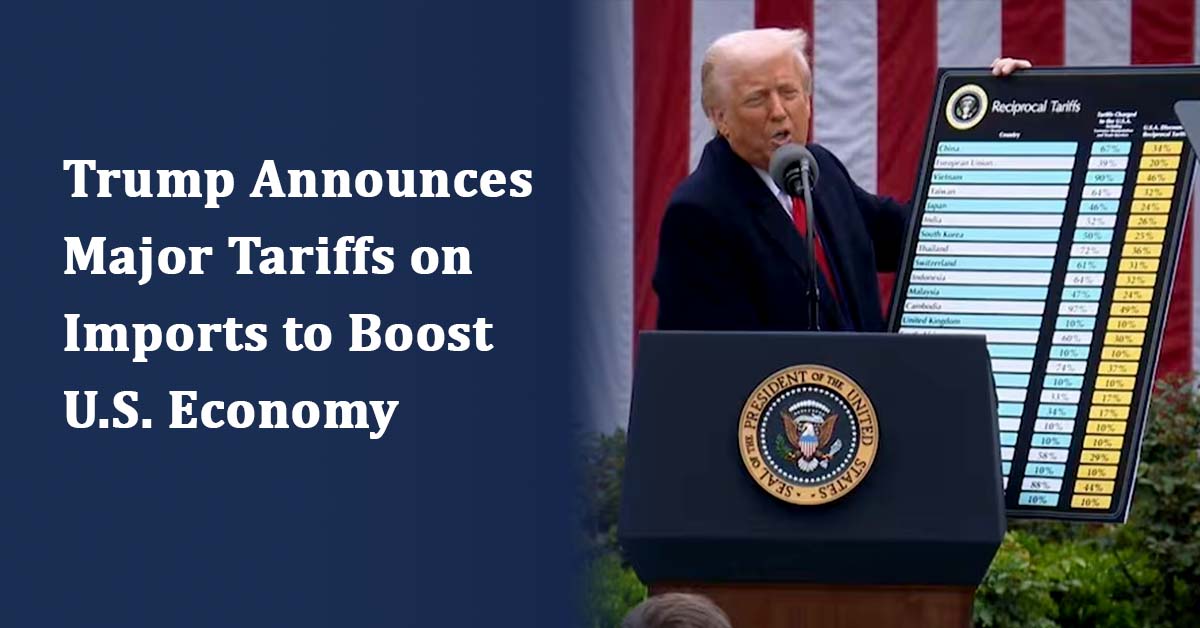
On April 2, 2025, President Donald Trump introduced a new trade policy aimed at strengthening the U.S. economy by imposing significant tariffs on goods imported from other countries. He called this move “Liberation Day” and explained that it would help protect American businesses and workers by making foreign products more expensive.
In addition to the general 10% tariff, Trump also set higher tariffs on products from countries that have a big trade surplus with the U.S., meaning they export more to the U.S. than they import from it. The tariff rates for some of these countries are as follows:
- China: 34%
- Taiwan: 32%
- European Union countries: 20%
- Japan: 24%
- Vietnam: 46%
- South Korea: 25%
- India: 26%
This approach is meant to make other countries “pay their fair share” and help the U.S. economy grow by reducing the reliance on foreign-made goods. Certain goods will be exempt from the new tariffs announced by Trump. These include steel and aluminium products already facing tariffs, cars and auto parts under existing tariffs, as well as copper, pharmaceuticals, semiconductors, and lumber. Additionally, precious metals like bullion, energy products, and certain minerals not available in the U.S. will not be affected.
Markets Reactions
The announcement of these new tariffs has caused confusion and fear in global markets. Asian stock markets dropped, and there were also declines in U.S. futures trading as investors worried about the potential effects on international trade.
Conclusion
The new tariff announcement by President Donald Trump on April 2, 2025, is poised to have significant impacts on both the U.S. and global economies. In the short term, the tariffs are expected to disrupt global supply chains, potentially raising the cost of imported goods, which could lead to higher inflation in the U.S. On a macroeconomic scale, the tariffs are likely to affect manufacturing in the U.S., both positively and negatively. On the positive side, the reduced reliance on foreign goods could encourage U.S. companies to bring production back home, boosting job creation and strengthening certain sectors of the economy which would obviously take time, as US is heavily depended on manufacturing countries. However, higher input costs for manufacturers who rely on imported raw materials could raise production costs and squeeze profit margins. This could slow the growth of industries like automotive, electronics, and construction, which depend heavily on international supply chains. While tariff could have a negative impact on world economy which could bring US into recession, which would have a negative impact as US is heavily depended on manufacturing countries.
| Industries | IMPACT | REASON |
| Pharmaceuticals | Positive | No Tariffs on them |
| Steel | Positive | No Tariffs on them |
| ENERGY | Positive | No Tariffs on them |
| Copper | Positive | No Tariffs on them |
| Auto parts | Positive | No new tariff, have existing tariffs |
| Electronics | Negative | will face 27% tariff |
| Textiles | Negative | will face 27% tariff |
